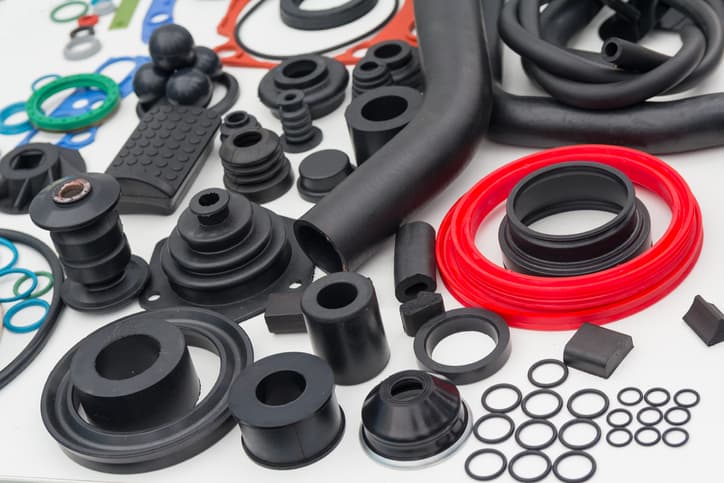
Manufacturing in various industries may rely on custom rubber molding to supply materials of specific functional needs with a high degree of accuracy. Some manufacturers use molding processes as they enable the precise production of components in a variety of applications. Enhanced processing can make molded rubber appropriate for harsh conditions that demand durability and resistance to wear. Here are a few benefits of custom rubber molding in modern manufacturing:
Design Flexibility Advantages
Custom rubber molding offers design flexibility; this is due to the flow and curing characteristics being controllable. Research into contemporary elastomer processing demonstrates the predictable response of engineered materials in forming cycles. This enables the components to attain fine geometries without having structural weaknesses and non-uniform density.
Manufacturers have an opportunity to create parts that need complex curves or functional features built into them. This flexibility is useful where vibration control or fine sealing reliability is required in the system. Efficient molding processes also facilitate finer sections without losing total part resistance. Controlled shaping allows the generation of specific mechanical behavior under varied load or environmental conditions. These benefits enable designers to develop components that satisfy desired performance criteria by selecting geometry with intent.
Production Efficiency Gains
Current injection molding methods have allowed the efficiency of manufacturing cycles to improve. Precise gating measures help to steady filling, which minimizes errors within large-scale production settings. These enhancements may reduce cycle time without compromising dimensional accuracy over small engineering tolerances. Automated monitoring helps operators in stabilizing temperature and pressure profiles at every stage of molding.
Constant production contributes to predictable performance in several cycles. Less variation enhances the reliability of the entire manufacturing process, and it may decrease wastage of energy and material. Accuracy in instrumentation helps attain predictable curing behavior to enhance the mechanical properties of molded components. This efficiency improvement assists manufacturers in maintaining the increasing demand without affecting the quality of products or disturbing workflow.
Sustainability-Driven Improvements
Scientific studies explain new methods of making synthetic rubber materials more sustainable; the innovations enhance the environmental performance of molding activities. This is possible because of reduced reliance on oil reserves. Renewable feedstocks are used in processes to minimize carbon emissions in traditional elastomer manufacturing. Improved material structures provide equal performance in terms of mechanics with reduced ecological disadvantages in formulation. These advances help manufacturers find greener solutions without compromising part reliability and life cycle.
Better sustainability is the alignment of molded components with the contemporary industrial responsibility to responsible sourcing practices. Optimized syntheses may give more homogeneous polymers that need less energy to process. This combination of durability and sustainability makes rubber molding a reliable option in environmentally friendly manufacturing.
Material Waste Reduction
Contemporary molding systems allow a reduction in waste because of orchestrated material flow. Less toxic chemical formulations enhance reaction reproducibility and reduce residual products that need to be disposed of. Optimal gating and venting designs help to eliminate overheating or degradation. These advancements underscore the role of custom rubber molding in enhancing sustainability through process refinement and cleaner production chemistry.
Precision Performance Benefits
Well-controlled processing conditions yield uniform rubber parts. Even heat transfer provides predictable curing; this can enhance the alignment of molecules in completed components. This internal consistency aids in the high-pressure use of applications where compressed efforts are required or where certain elastic reactions are needed.
Scientific assessments emphasize better tolerance regulation made through optimum flow patterns during injection. This accuracy enables the engineers to rely on consistent performance under variable conditions of operations. Consistent molding behavior assists in sustaining shape retention during variable temperatures or mechanical forces; this is advantageous to manufacturers by offering them repeatability in quality that minimizes corrections. This high level of precision makes custom molding an ideal tool for managing complex engineering problems.
Use Rubber Molding
Custom rubber molding benefits contemporary manufacturing since it combines precision, sustainability, and efficiency. Improved production processes make manufacturing more reliable and less variable. Decreased waste and increased curing lead to better environmental results without restricting industrial capacity. All of these benefits support the use of molding as a reliable tool in the creation of high-performance components. These results demonstrate the reason custom rubber molding may continue to be at the center of changing manufacturing requirements. Contact a provider of rubber parts to start benefiting from custom molding.

